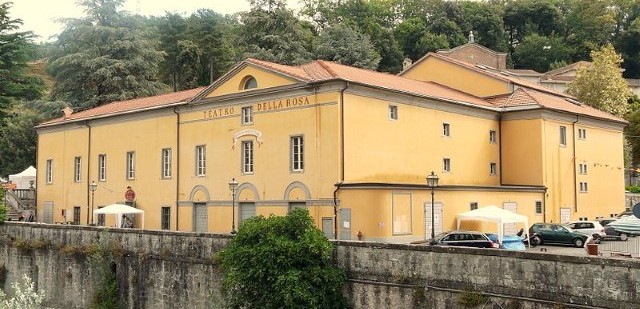
After passing from Spanish control to the Grand Duchy of Tuscany, Pontremoli experienced a resurgence in economic activity which created a new bourgeois class of traders and entrepreneurs. It wasin this context that the idea of creating a new theatre arose. The proposal was first put forward in 1690 but came to fruition only in 1739 when an Academy called della Rosa was established for the purpose (motto: Pungit et delectat).
The design and fundraising lasted many years and only in 1767 was the structure substantially completed and the painter Antonio Contestabili commissioned to carry out the decorations and produce the curtain. The latter, which was the most important work of the Pontremolese artist, depicted an idealised and graceful dance of nymphs and fauns set in a large landscape inspired by Lunigiani views. Despite serious damage sustained in the second world war, it survived, was repaired and is still preserved in the theatre.
The Accademia della Rosa inaugurated its first theatrical season with the carnival of 1773. Originally, the theatre with its horseshoe plan was equipped with thirty-three boxes, arranged in two tiers and a gallery. Around 1840 the gallery was converted into a third tier of boxes, making a total of forty-eight, and the decorations were renewed by the Parma painter Filippo Bocchi. The theatre continued to host comedies, melodramas and civil events, such as the tributes for the poet Giovanni Pascoli in 1912 and for General Ezio Reisoli in 1913, until the second world war during which it suffered serious damage to its structure.
In 1948 the theatre underwent a restoration involving alterations to the original structure of the vault and the stage, and reconstruction of the gallery so that it could be used as a cinema. At the end of the 1970s, the theatre was condemned on structural and safety grounds but eventually it was brought back into use in 1998 thanks to restorations undertaken under the supervision of the architects Lazzerini and Santoni.